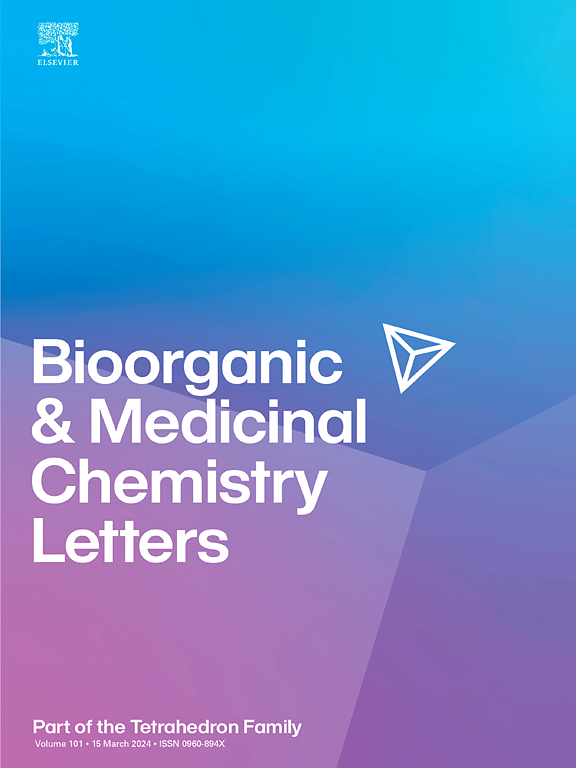Stanolone-1,2,3-Triazole derivatives: Synthesis, DNA damage in tumor cells and anti-prostate Cancer activity study
IF 2.2
4区 医学
Q3 CHEMISTRY, MEDICINAL
引用次数: 0
Abstract
1,2,3-Triazole skeleton may act as both a hydrogen bond acceptor and a linker connecting different structures, and androgens bearing 1,2,3-triazole structures exhibit interesting biological activities against prostate cancer. Based on this rationale, various substituted 1,2,3-triazole groups were introduced to stanolone via click chemistry, and a total of 32 stanolone derivatives (13a - 13r and 14a–14n) were obtained under mild conditions. Their in vitro inhibitory activities against two prostate cancer cell lines, PC3 and DU145, were evaluated, and a preliminary structure-activity relationship (SAR) was established. Compounds 14e, 14f, and 14 k exhibited significant inhibitory effects, with IC50 values of 12.33 μM, 6.69 μM, and 13.83 μM, respectively, against PC3 cells, and 18.55 μM, 5.67 μM, and 5.08 μM, respectively, against DU145 cells. These compounds were found to induce mitochondrial apoptosis in PC3 and DU145 cells. Further investigation revealed the activation of the γ-H2AX signaling pathway, leading to DNA damage in tumor cells. Notably, compound 14 k also demonstrated promising antitumor efficacy in a DU145 xenograft mouse model, and showing no cytotoxicity to normal human renal epithelial cells (HK−2), human liver cells (LO2), or human lung epithelial cells (BESA-2b) in vitro, indicating its potential as a lead compound for future antitumor drug study.

斯坦诺酮-1,2,3-三唑衍生物:合成、肿瘤细胞DNA损伤及抗前列腺癌活性研究。
1,2,3-三唑骨架既可以作为氢键受体,也可以作为连接不同结构的连接体,含有1,2,3-三唑结构的雄激素对前列腺癌表现出有趣的生物活性。基于这一原理,通过点击化学将各种取代的1,2,3-三唑基团引入到stanolone中,在温和的条件下共得到32个stanolone衍生物(13a - 13r和14a-14n)。研究了其对两种前列腺癌细胞PC3和DU145的体外抑制活性,初步建立了构效关系(SAR)。化合物14e、14f和14 k对PC3细胞的IC50值分别为12.33 μM、6.69 μM和13.83 μM,对DU145细胞的IC50值分别为18.55 μM、5.67 μM和5.08 μM。这些化合物可诱导PC3和DU145细胞的线粒体凋亡。进一步研究发现γ-H2AX信号通路激活,导致肿瘤细胞DNA损伤。值得注意的是,化合物14 k在DU145异种移植小鼠模型中也显示出良好的抗肿瘤效果,并且在体外对正常人肾上皮细胞(HK-2)、人肝细胞(LO2)或人肺上皮细胞(BESA-2b)无细胞毒性,表明其有可能成为未来抗肿瘤药物研究的先导化合物。
本文章由计算机程序翻译,如有差异,请以英文原文为准。
求助全文
约1分钟内获得全文
求助全文
来源期刊
CiteScore
5.70
自引率
3.70%
发文量
463
审稿时长
27 days
期刊介绍:
Bioorganic & Medicinal Chemistry Letters presents preliminary experimental or theoretical research results of outstanding significance and timeliness on all aspects of science at the interface of chemistry and biology and on major advances in drug design and development. The journal publishes articles in the form of communications reporting experimental or theoretical results of special interest, and strives to provide maximum dissemination to a large, international audience.

 求助内容:
求助内容: 应助结果提醒方式:
应助结果提醒方式:


